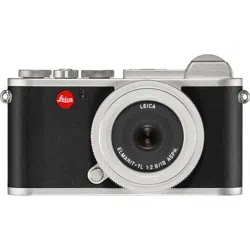Loading ...
Loading ...
Loading ...

EN
86
Instructions for care & use
INSTRUCTIONS FOR CARE & USE
Camera
• Only clean the camera with a soft, dry cloth. Stubborn dirt
should first be moistened with a watered-down detergent and
can then be wiped away with a dry cloth.
• Wipe the camera with a clean, lint-free cloth to remove spots
and fingerprints. Tougher dirt in hard to reach corners of the
camera housing can be removed with a small brush.
• All mechanically operated bearings and sliding surfaces on your
camera are lubricated. Please remember the following if the
camera has not been used for an extended period of time: Op-
erate the camera a few times in three-month intervals to prevent
a hardening of the lubricant. We also recommend repeated
adjustment and use of the setting wheels.
Lenses
• A soft hair brush will usually suffice to remove dust from the
outer lens. Remove more severe soiling with a very clean, soft
cloth that is completely free of foreign matter. Wipe the lens in
circular motions from the inside outward. We recommend using
microfiber cloths (available from photography retailers and opti-
cians) that are stored in a protective container and are ma-
chine-washable up to 40 °C (do not use fabric softener, never
iron!). Do not use spectacle lens cleaning cloths, because they
are soaked in chemicals, which could damage the lens glass.
• The lens hoods supplied protect the lens against accidental
fingerprint smudges and rain.
Battery
Rechargeable lithium-ion batteries generate power by way of in-
ternal chemical reactions. These reactions are influenced by am-
bient temperature and humidity. Very high or very low ambient
temperatures reduce the service life of the battery.
• Always remove the battery if the camera will not be used for an
extended period of time. Leaving the battery in the camera will
result in a deep discharge after a few weeks, which means
voltage levels could drop significantly.
• Lithium-ion batteries should only be stored partially charged, i.e.
not fully depleted or fully charged. During very long storage
periods, the battery should be charged for approx. 15 minutes
twice a year to prevent deep discharge. Always keep the battery
contacts clean and readily accessible. Although lithium-ion bat-
teries are secured against short circuits, they should still be
protected against contact with metal objects like paper clips or
jewelry. A short-circuited battery can get very hot and cause
severe burns.
• The battery must have a temperature between 0 °C and 35 °C
(32 °F and 95 °F) for charging, as the charger may otherwise
not switch on, or will automatically switch off.
• Check the housing and the contacts immediately for any
damage if a battery is accidentally dropped. A damaged battery
can damage the camera.
• Batteries have a limited service life.
• Take your defective batteries to a collection point to ensure
correct recycling.
• Never throw batteries into a fire as they might explode!
Loading ...
Loading ...
Loading ...
